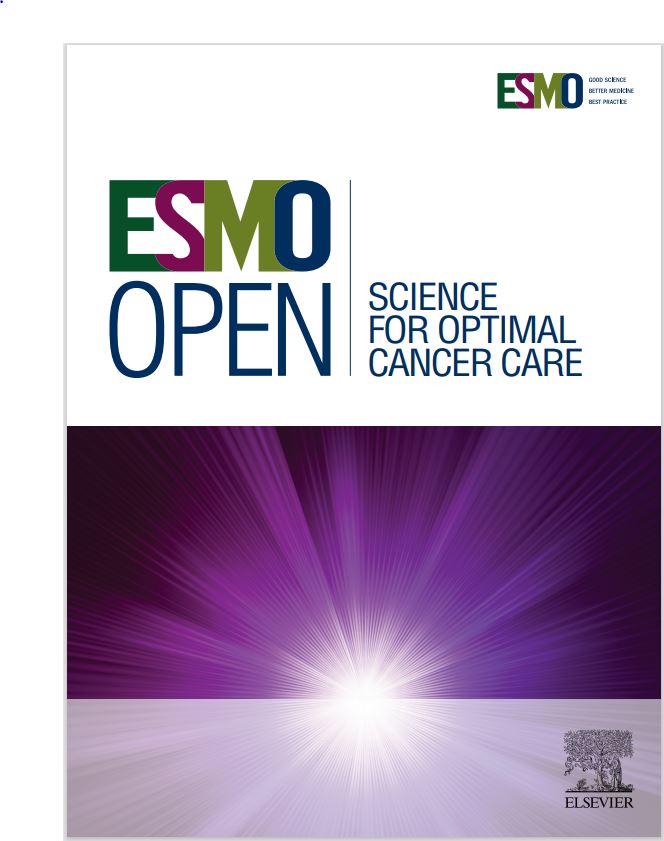Genomic and clinical features in young women with estrogen receptor-positive, HER2-negative breast cancer
IF 8.3
2区 医学
Q1 ONCOLOGY
引用次数: 0
Abstract
Background
Young women (≤40 years at diagnosis) with estrogen receptor (ER)-positive, human epidermal growth factor receptor 2 (HER2)-negative early breast cancer (EBC) represent a high-risk group with distinct biological features. Conventional biomarkers, such as Ki67 and immunohistochemistry (IHC)-based subtypes, are not validated in this population. This study assessed the prognostic value of clinical and genomic biomarkers and explored age-related clinicopathological and gene expression differences.
Patients and methods
A retrospective cohort of 658 patients with ER-positive, HER2-negative EBC who underwent genomic risk testing between 2015 and 2023 at a single institution was analyzed. Patients were stratified by age at diagnosis: ≤40 years (n = 81), 41-50 years (n = 232), and >50 years (n = 345). Clinical data, treatments, and outcomes were assessed. Prediction Analysis of Microarray 50/Prosigna was used to determine intrinsic subtypes and risk of recurrence (ROR); The Cancer Genome Atlas data were used for validation. Survival analyses included Kaplan–Meier, log-rank, and Cox models.
Results
Young patients at diagnosis (age ≤40 years) had more locally advanced tumors, higher Ki67, and a greater prevalence of luminal B subtype. Clinical and IHC markers poorly predicted ROR; notably, 50% of Ki67 <10% tumors in young women were ROR high-risk. Five-year disease-free survival (DFS) was lower in young patients (82.8%) compared with older groups (90.5% and 92.8%, respectively; P = 0.042). Among IHC luminal A-like tumors, young age was associated with increased recurrence risk [hazard ratio (HR) 5.75, P < 0.001]. ROR score was independently prognostic in young women (HR 3.12, P = 0.004). Gene expression revealed lower estrogen-related and higher basal-like gene levels in younger patients.
Conclusion
Young women with ER-positive, HER2-negative EBC have poorer outcomes. Ki67, in particular, is a poor prognostic marker in this group. Genomic profiling improves risk stratification and highlights unique tumor biology, supporting personalized treatment strategies.
雌激素受体阳性her2阴性乳腺癌年轻女性的基因组和临床特征
背景雌激素受体(ER)阳性、人表皮生长因子受体2 (HER2)阴性的早期乳腺癌(EBC)的年轻女性(诊断时≤40岁)是一个具有独特生物学特征的高危人群。传统的生物标志物,如Ki67和基于免疫组织化学(IHC)的亚型,在这一人群中没有得到验证。本研究评估了临床和基因组生物标志物的预后价值,并探讨了与年龄相关的临床病理和基因表达差异。研究人员对2015年至2023年间在同一家机构接受基因组风险检测的658例er阳性、her2阴性EBC患者进行了回顾性队列分析。患者按诊断年龄分层:≤40岁(n = 81)、41-50岁(n = 232)和50岁(n = 345)。评估临床资料、治疗方法和结果。使用Microarray 50/Prosigna预测分析来确定固有亚型和复发风险(ROR);癌症基因组图谱数据用于验证。生存分析包括Kaplan-Meier、log-rank和Cox模型。结果年轻确诊患者(年龄≤40岁)局部进展期肿瘤较多,Ki67较高,腔内B亚型患病率较高。临床和免疫组化标记难以预测ROR;值得注意的是,年轻女性中50%的Ki67 <;10%肿瘤为ROR高风险。年轻患者的5年无病生存率(DFS)(82.8%)低于老年组(分别为90.5%和92.8%;P = 0.042)。在IHC腔内a样肿瘤中,年轻与复发风险增加相关[危险比(HR) 5.75, P < 0.001]。ROR评分是预测年轻女性预后的独立指标(HR 3.12, P = 0.004)。基因表达显示,年轻患者雌激素相关基因水平较低,基底样基因水平较高。结论年轻女性er阳性、her2阴性EBC预后较差。尤其是Ki67,在这个群体中是一个不良的预后指标。基因组分析改善了风险分层,突出了独特的肿瘤生物学,支持个性化治疗策略。
本文章由计算机程序翻译,如有差异,请以英文原文为准。
求助全文
约1分钟内获得全文
求助全文
来源期刊

ESMO Open
Medicine-Oncology
CiteScore
11.70
自引率
2.70%
发文量
255
审稿时长
10 weeks
期刊介绍:
ESMO Open is the online-only, open access journal of the European Society for Medical Oncology (ESMO). It is a peer-reviewed publication dedicated to sharing high-quality medical research and educational materials from various fields of oncology. The journal specifically focuses on showcasing innovative clinical and translational cancer research.
ESMO Open aims to publish a wide range of research articles covering all aspects of oncology, including experimental studies, translational research, diagnostic advancements, and therapeutic approaches. The content of the journal includes original research articles, insightful reviews, thought-provoking editorials, and correspondence. Moreover, the journal warmly welcomes the submission of phase I trials and meta-analyses. It also showcases reviews from significant ESMO conferences and meetings, as well as publishes important position statements on behalf of ESMO.
Overall, ESMO Open offers a platform for scientists, clinicians, and researchers in the field of oncology to share their valuable insights and contribute to advancing the understanding and treatment of cancer. The journal serves as a source of up-to-date information and fosters collaboration within the oncology community.
 求助内容:
求助内容: 应助结果提醒方式:
应助结果提醒方式:


